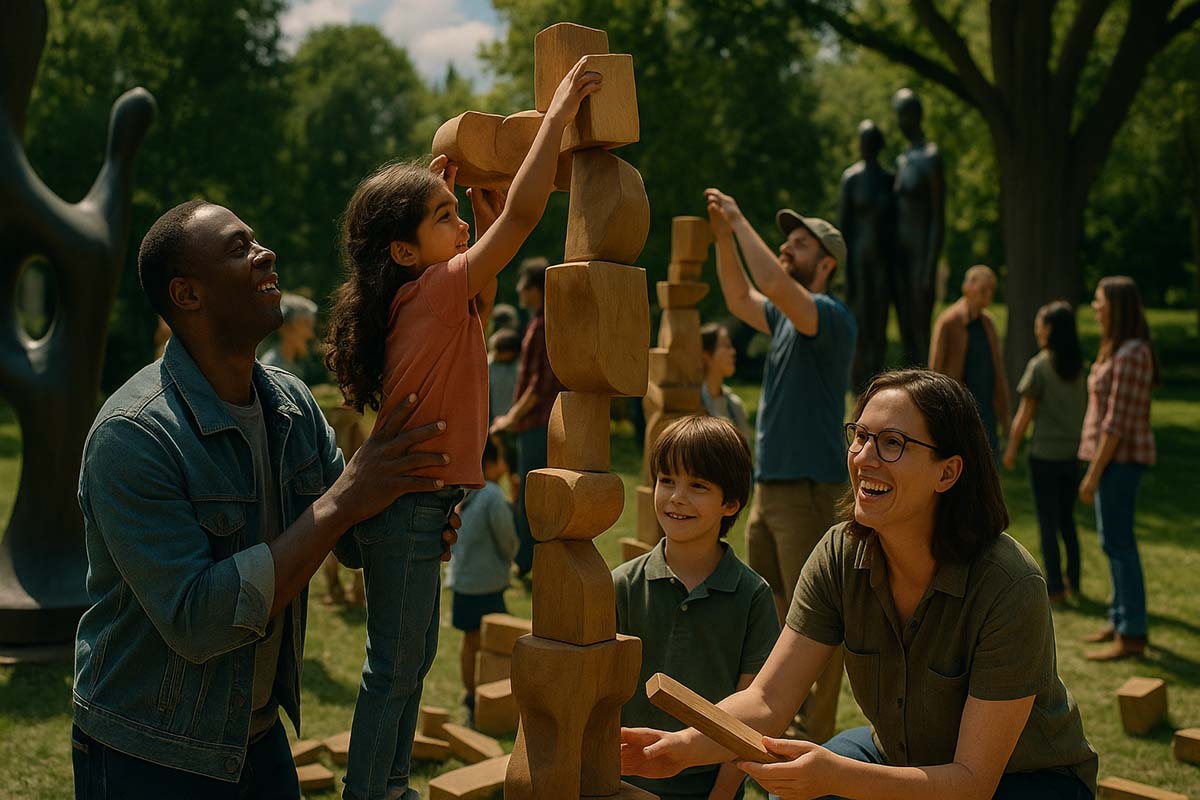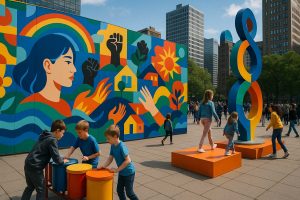
How Community Days in Sculpture Gardens Strengthen Human Connection
Bringing People Together Through Art
Art has always served as a mirror of shared human experience. In a sculpture garden, this expression takes on a more personal and physical shape. When such spaces host a community day, the outcome becomes more than artistic—it becomes social.
A community day lets people experience art while interacting with others from their neighborhood. These events promote an atmosphere of ease and openness. Guests do not just look at works of art—they interact, ask questions, and reflect on what these pieces mean to them personally.
Simple moments, like watching a child mold clay or listening to an elder recall memories inspired by a sculpture, build a bridge between strangers. What starts as an art event becomes an experience of connection.
What This Article Covers
- How events build stronger local communities
- Global examples and inspiration
- Activities for all age groups and interests
- Long-term value to culture and economy
- Practical steps to organize a community day
Stronger Social Ties Through Art Events
When people attend a community day, the shared time encourages genuine conversations. Sculpture gardens are naturally calming spaces. Their layout encourages slow movement, reflection, and curiosity.
Adding interactive sessions, such as clay molding or collaborative sculpture builds, turns the garden into a living space. People work side by side. Strangers chat. Artists explain their techniques. A sense of belonging grows with each interaction.
Some gardens invite guest facilitators to run poetry sessions near specific sculptures. Others provide chalk stations for children to draw temporary art on nearby pavements. These layers of engagement allow everyone—from toddlers to seniors—to take part in their own way.
Global Examples to Learn From
Storm King Art Center, USA
Known for its wide, open landscapes and massive sculptures, Storm King hosts spring family days that focus on nature-inspired creation. There are sessions where families collect natural materials and build temporary installations. Yoga classes, picnic spots, and live storytelling turn the day into a retreat.
Yorkshire Sculpture Park, UK
Besides rotating exhibitions, this park runs monthly community events. On these days, they open sculpture trails with local guides, outdoor film screenings, and participatory painting areas. There are moments of quiet sketching and bursts of group dance—whatever suits the mood of the moment.
Herrenhausen Gardens, Germany
These gardens mix baroque landscaping with modern public programs. Their art fairs feature sculpture booths from local schools and hobbyists. Pop-up food stands offer regional cuisine. Visitors can shift parts of interactive exhibits or create collective mosaics. The event makes space for tradition and experimentation to meet.
Each event focuses on local culture while welcoming guests. There’s no pressure to be an expert in art—only a participant in community.
Activities That Include Everyone
A thoughtful event brings people from all walks of life. Here’s how gardens can appeal to a variety of visitors.
Young Learners
School groups often join during early hours. Garden staff prepare age-appropriate guides with drawing prompts. Recycled sculpture competitions teach both artistic thinking and environmental care.
Families and Elders
Families enjoy scavenger hunts, while older visitors often prefer calm walks with narrated histories of the artworks. Soft background music helps maintain a soothing pace.
Artists and Local Creatives
More advanced visitors can attend discussions about materials, process, and public engagement. This group often helps shape future events and brings new energy to existing programs.
Inclusion starts with listening. Surveys before and after each event offer helpful insight into what worked and what can improve.
Design for Comfort and Access
Details matter when planning community days. Comfort helps guests stay longer and engage more fully.
Rest areas with shade and seating encourage longer visits
Water stations reduce fatigue and help families with children
Wheelchair-friendly paths and ramps ensure everyone moves freely
Volunteers trained in hospitality support smoother experiences
It helps to prepare multilingual signs and info booklets. This supports international guests or locals who prefer reading in their mother tongue. Music volumes should be kept at soft levels. Art deserves to be experienced without sensory overwhelm.
How Local Culture and Business Benefit
Aside from community value, sculpture gardens provide real help to nearby business. Artists and vendors who join the event gain visibility. Attendees often stop by local cafés, bakeries, or bookstores before or after the event.
Some gardens work with surrounding restaurants to create themed menus tied to the exhibit. For example, a sculpture based on harvest rituals might inspire a seasonal farm-to-table lunch option at a nearby bistro.
Small wins like these generate income, create jobs, and foster respect between creative and commercial sectors.
Planning Steps for a Successful Community Day
If you’re part of an organization, school, or art group, here’s how to begin planning your own event.
Set a Clear Theme
Choose a message or idea to center the event. It could be sustainability, neighborhood pride, or celebrating local history.
Gather Support
Invite artists, small businesses, student groups, and volunteers. Provide them with guidelines and space for creativity.
Promote Effectively
Use flyers, school newsletters, and community social pages. A well-designed schedule builds anticipation.
Secure the Site
Check local safety regulations. Have a first-aid team ready. Coordinate parking and entry points.
Document the Event
Take photos, interview guests, and share the experience through a photo gallery or blog. This builds momentum for future events.
A successful day is not always large. It is measured by the smiles, conversations, and memories created.
Staying Connected After the Event
Art doesn’t end when the event closes. Sculpture gardens can serve as year-round hubs for ongoing engagement.
Host small monthly meetups with past attendees
Create online forums where guests post their own art inspired by the garden
Offer mini-workshops taught by local creators
With these follow-up efforts, the garden becomes more than a place to visit—it becomes part of everyday life.
Lasting Meaning in Shared Spaces
Bringing people into the same space with the invitation to slow down, observe, and create together is a powerful idea. When the setting is a sculpture garden, the effect becomes even stronger. There’s open air, quiet corners, and space for play.
Guests arrive as individuals. They leave with a shared experience, a new connection, or even a new interest in art. A well-planned community day does more than fill the garden. It brings the heart of the community into it.
Art has always been a way to express and unite. With simple planning and open doors, sculpture gardens can become living spaces that keep giving—long after the last sculpture is seen.

